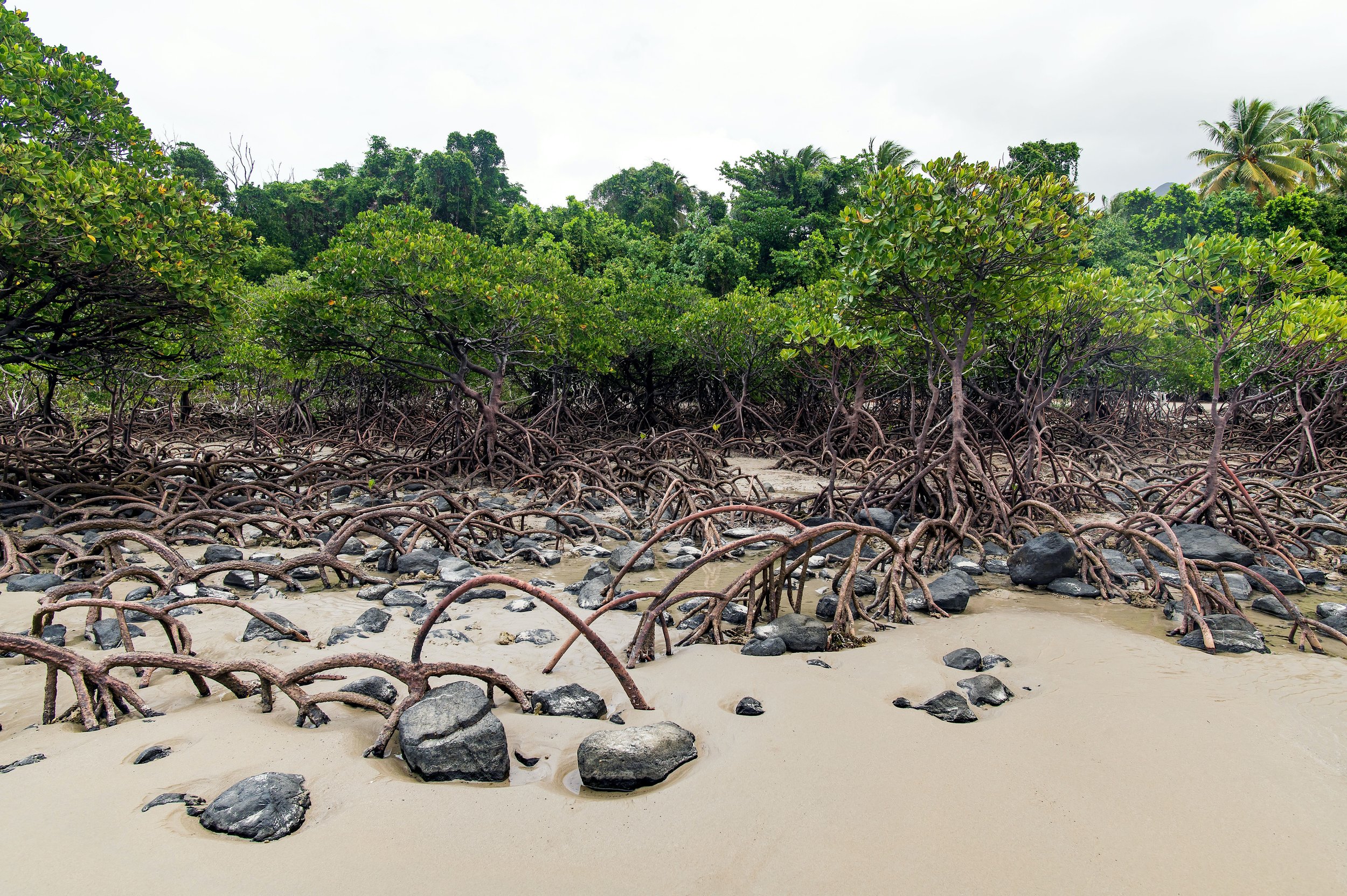
Management and Conservation of Blue Carbon ecosystems in Pacific Island Countries
“No people on earth are more suited to be the guardians of the world’s largest ocean than those for whom it has been home for generations”
- Epeli Hau'ofa
The overall objective of the MACBLUE project is to preserve both biodiversity and ecosystem services of important coastal ecosystems as a key contribution to food and income security for coastal populations in Pacific Island Countries.
Blue Carbon in the Pacific
Seagrass meadows and mangrove forests sequester carbon faster and store more carbon per hectare than terrestrial forests. These blue carbon ecosystems play a significant role for people and nature in the four Pacific Island partner countries. They provide habitat and a source of food for ecologically and economically important species, improve water quality, safeguard food security, and protect the shoreline, its population, and adjacent ecosystems from storm-generated waves, sea level rise and erosion.
Strengthening institutional and individual capacities
The MACBLUE project maps the extent of seagrass and mangrove ecosystems in its four partner countries and assesses and models related carbon storage capacity, emission potential and ecosystem services. The resulting data allows inventories of associated natural capital and supports government partners in their efforts to strategically develop and implement conservation, management and rehabilitation efforts. Based on effective mapping and analysis of the seagrass and mangrove ecosystem services, Governments are assisted to establish nationally appropriate incentives for sustainable management and rehabilitation efforts.

"The Pacific Ocean is no doubt the single greatest natural endowment to us – it is home to an incredible amount of marine life. It should be our generations investment to guarantee that inter-generational equity and the legacy we want to hand over to our children and their children"
- Pacific Ocean Commissioner, Dr Filimon Manoni






